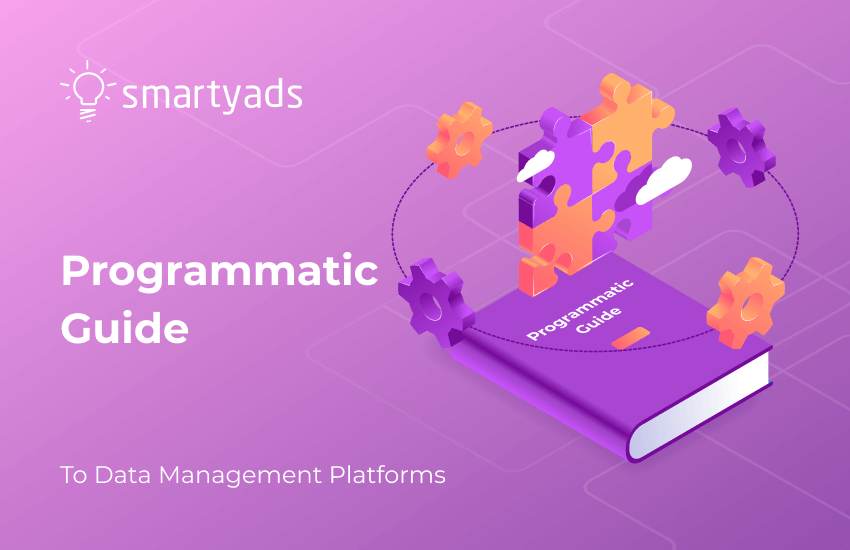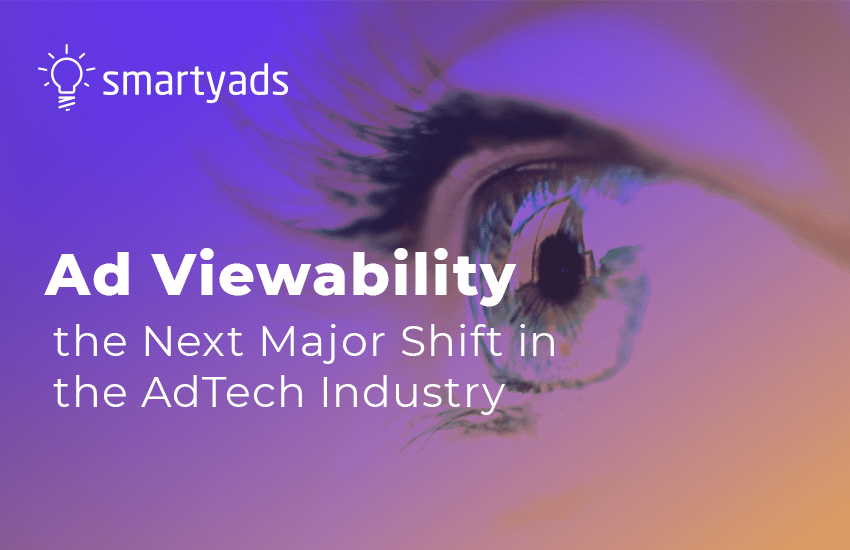Native advertising on mobile devices looks like a rare chance of mutual benefit: more ROI-driving for advertisers, more suitable for publishers, and more than acceptable for the viewers.
Since users increasingly consume content using tablets and mobile devices, the highest increase in native advertising is expected to hit the mobile segment. Native advertising expenditure in the United States witnessed a remarkable surge of 37% in 2021, and experts predict it will soar even higher, reaching an impressive $98.59 billion. That's why media buyers are actively preparing to adjust budgets to catch up with the trends.
For those of you, who are not familiar with this ad format, let's take a brief look at the concept.

What is mobile native advertising?
What are mobile native ads? Basically, mobile native ads are the same as desktop native formats. They can work as sponsored content, feed ads, social media posts, recommendation widgets, and more.
Native mobile advertising implementation, however, has peculiarities since the mobile ecosystem is fundamentally different from the desktop. Native advertising can be described as "disguised" since it harmoniously blends with the rest of the website content. It imitates the interface of the site or app and often replicates essential website functionality.
Mobile native ad trends: where are we now?
Advertisers
According to eMarketer, a substantial 14.9% year-over-year surge happened for native display ads spending in 2022, soaring to an impressive $87.6 billion. The lion's share of this expenditure is allocated to mobile devices and social media platforms, fueled by their escalating usage. In a promising outlook, native social media ads were projected to experience a robust growth of 17.6% in 2022, with an additional 13.9% expansion expected in 2023.
When it comes to native ads for mobile sold programmatically, they represented 67.7% of native ad spend which equals $83.42 billion.
Users
The users also give mobile native advertising thumbs up since the ad units are far less intrusive than traditional banner ads.
The MMA research goes on to say in-app native units are viewed three times more often than banner ads, mainly because, for instance, sponsored content is also liked, shared, and frequently reposted. As a result, their engagement indexes reach 20–60% above average.
Publishers
If the majority of publishers and app developers are concerned with the 'unknown' characteristics of ads that pop up on their websites, mobile web native ads are here to save the situation. Instead of repelling visitors with flashy pictures, native ad offerings deliver additional value to the users with content that entertains and educates them.
What's more, the trends say that advertisers spend only 19% on mobile native ads compared to 81% in-app. This means that in-app is the true money-making polygon publishers should opt for these days.
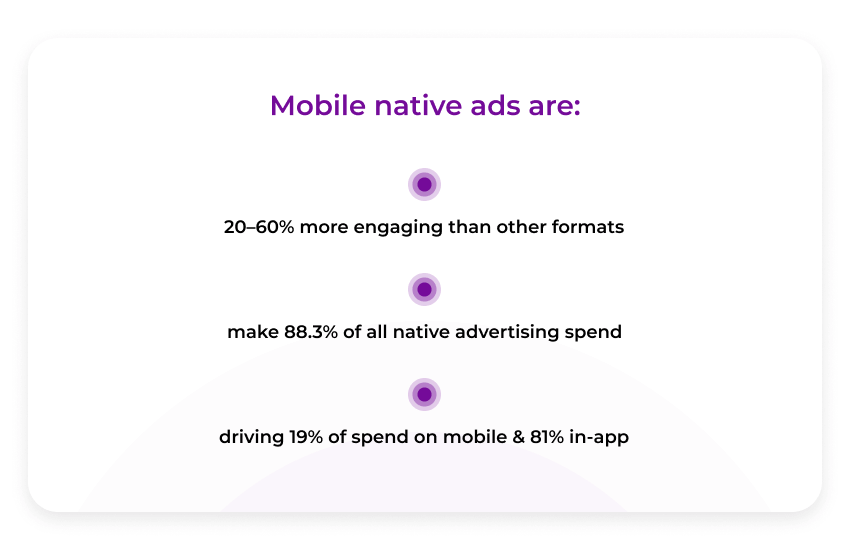
Mobile native advertising: converting types and formats
IAB has identified six main formats of native ads: search native, recommendation widgets, sponsored articles, custom native ads, in-app videos, and in-feed ads.
In-search native ads
This is a native advertising message that appears at the top of the user's search query and visually imitates organic search results. The ad link looks almost the same as the rest of the organic links, and their snippet corresponds to the user's request.
Even though such advertising is always color-highlighted and has an appropriate marking, around 40% of users still wrongly take such ads for authentic websites, which results in high bounce rates.

Recommendation widgets
Such ads are located in blocks usually named "Read also" or "Recommended to you". These blocks on the web page contain links to the articles (leading to other thematically related blogs or directly to the advertiser's website).
Usually, recommendation widgets are placed at the bottom of the article, but either way, they can be located at the top or in sidebars.
Some experts call recommended widgets the best mobile native ads since advertisers can expect their ads to be shared through various sources with relevant thematic. According to Business Intelligence, they are also 20% better revenue growers than in-feed units.
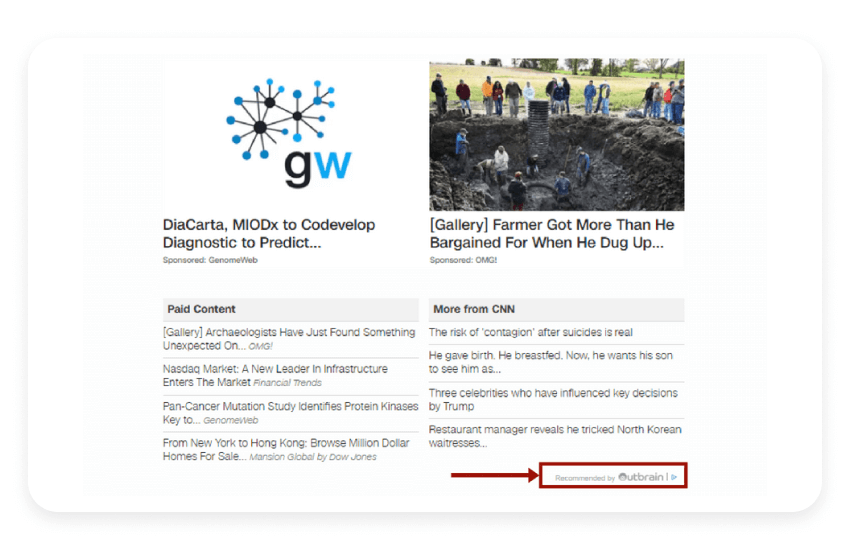
Sponsored or branded content
Sponsored content is usually represented by articles created and promoted in partnership with advertisers. The articles are written on the advertiser's side according to the publisher's editorial politics. The publisher posts such content and promotes it. If sponsored content is consistent with the rest of the editorial materials, relevant, and interesting to readers, they interact with it as with editorial articles.
Like any other kind of native ad, such articles are marked as "sponsored" or "branded". Examples of such you can easily find in The New York Times, The Telegraph, The Atlantic, and famous news portals.
.png)
Custom native ads
Mobile app native advertising is a perfect playground for custom native advertisements that go beyond the limitations of typical formats and mobile ad sizes. In other words, it is an individual solution created for the brand and based on personal goals.
Here is an example of such mobile native advertising: The users are encouraged to make "coub" from the brand's video right in the "coub" editor. The user participates and wins the prize for the most creative "coub". Just in a week, such a custom branding campaign can collect more than a million "coub" views. The same mechanism is applied to native mobile games, long reads, videos, polls, tests, and quizzes.
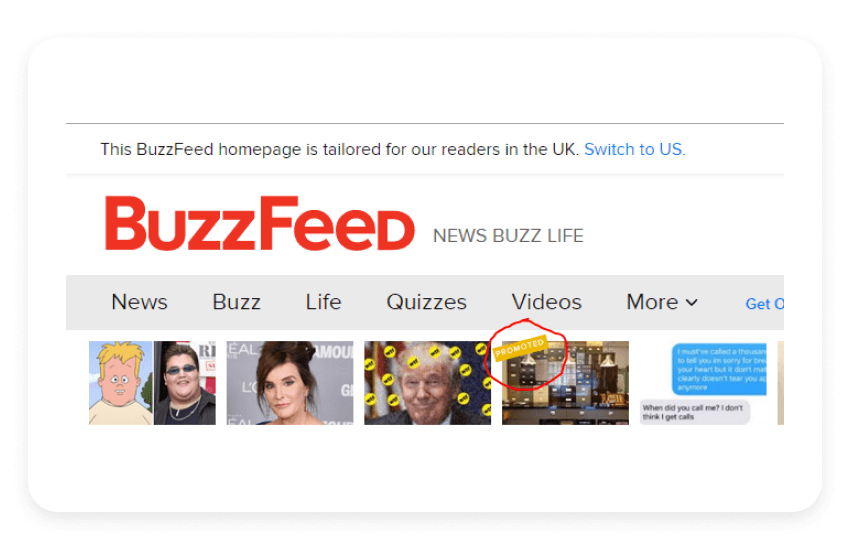
Native in-app videos
Mobile native ads work as 15-30 second long videos and can be located in the content or in-feed. It is possible to embed native ads in the video using unskippable pre-, mid-, and post-rolls. Examples of such you can find embedded in YouTube videos.
Some native video ads appear harmoniously within the app and start to autoplay in silence until the user clicks on them. Such video ads don't interfere with user experience and fit in naturally inside the app. According to the survey comparing five ad campaigns, the native placements, including pre-rolls, always performed much better than average.
Such native ads offer a lot of advantages, but we'll talk about the most important ones.
First
They provide a more engaging and immersive experience for users as the videos are integrated into the app's content. This can result in higher user attention and better brand recall.
Second
Native in-app video ads often have better viewability rates than other ad formats. Since native ads are integrated into the app's interface, users are more likely to see and engage with the video content.
Third
Native in-app video ads allow for better targeting and personalization. Advertisers can leverage data collected from the app, such as user behavior or preferences, to deliver more relevant and targeted video ads.
To ensure transparency, native in-app video ads should be clearly labeled as advertisements, similar to other native ad formats. It's important for advertisers to comply with platform guidelines and industry standards to maintain user trust and avoid any deceptive practices.
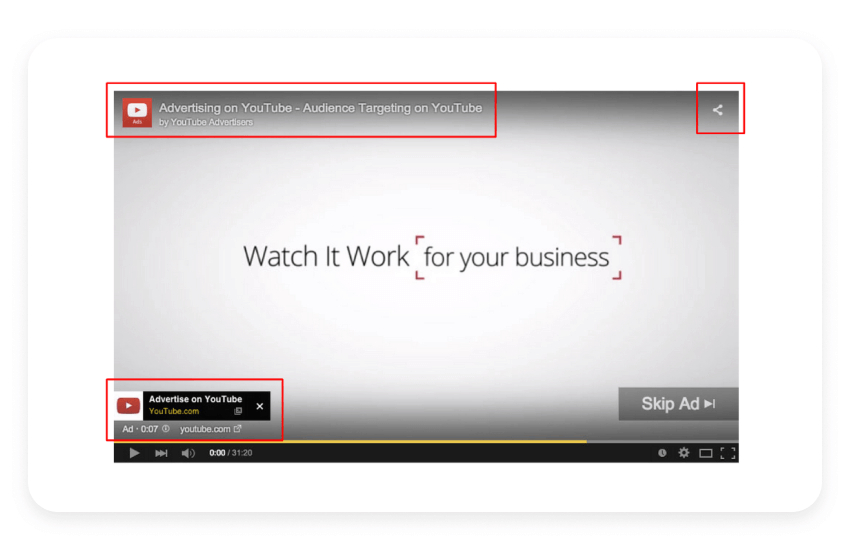
In-feed ads
In-feed mobile native ads most often get embedded in social or news feeds. If you're attentive, you can notice them while scrolling down the page on social networks or the website. They're marked as "sponsored" and shown among other editorial materials.
In-feed native ad post looks the same as non-advertising, and thus, may quickly capture the mobile user's interest since it's targeted to a particular user category.
You can find in-feed posts on Facebook, Twitter, Instagram, Pinterest, and Tumblr feeds, specifically marked with a color. If the concept of the mobile in-feed ad is creative and memorable enough, such type of ad can become infectious and quickly bring high incomes to the app publishers who target them programmatically using SSP.
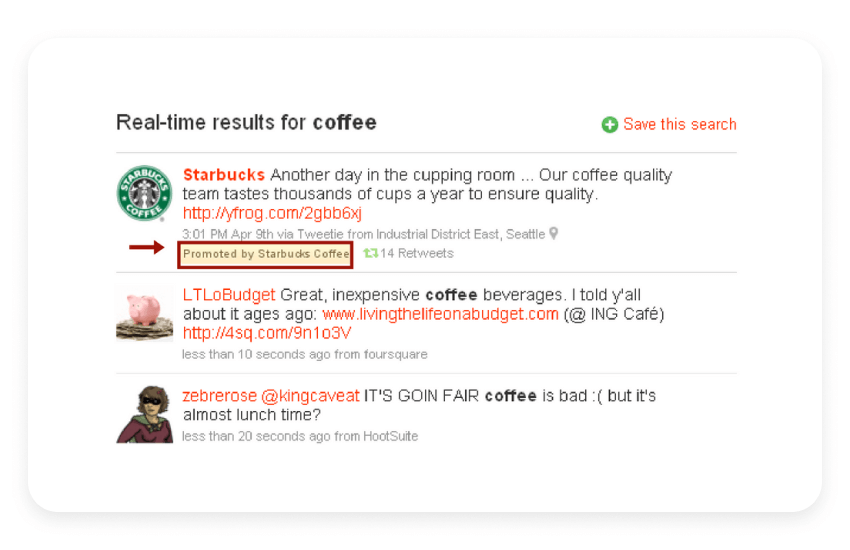
Mobile native advertising: future opportunities and challenges
Mobile native advertising refers to advertisements that are seamlessly integrated into the content and design of a mobile app or website. These native ads mimic the look and feel of the surrounding content, making them appear more natural and less intrusive to the user experience.
Native ads match the visual and functional elements of the app or website where they are displayed. They can appear as sponsored posts, recommended articles, in-feed native ads, or promoted listings. The aim is to make them blend in with the surrounding content, ensuring a more engaging and non-disruptive advertising experience for users.
Native advertising mobile app formats represent the vast amount of static and interactive ad units, which by design and content, are potentially interesting to mobile users. The future of mobile advertising is native, and this can easily be proven by the stats revealed above. By 2023, most of the digital advertising will go native and in-app. Here's why:
They're non-intrusive and useful
Native advertising gives additional value to the users who search for the information. It doesn't interfere with the overall in-app experience and strengthens user trust since it doesn't push to buy the product "here and now".
They escape ad blockers
One of the benefits of a native ad is that the ad blockers do not catch it because its information is beneficial to the consumer. It is worth noting that the majority of ad-blocking apps primarily target and block mobile browser ads. With native ads, such a problem ceases to exist.
They solve the problem of banner blindness
Today people ignore banner ads more often than ever because of ad fatigue; native ads are viewed three times more often than banners and shared more than all other formats altogether without the influence of banner blindness.
The only challenge here is that mobile native ads should always be properly marked in accordance with IAB's Native Advertising Playbook 2.0 and FTC Guide for Business. They list important recommendations brands must follow during creative concept development and ad unit designing. These documents have been created to make native ads transparent and avoid violations of consumer rights.
When it comes to the performance of mobile native advertising, it is measured the same way as other ad formats. If an ad unit has a clickable link, assess it like the banner or contextual ad: by CTR and conversion. For sponsored content, measure editorial metrics, such as reach, engagement, and conversion. In case your ad format is interactive, additionally, you can measure the engagement and user interaction with every structural part of the creative.
Takeaway thought
Studies on native ad format today have one underlying pattern — they agree on a straightforward fact that native advertising (especially mobile native ads) attracts more user attention. While native advertising mobile ad increases engagement, user loyalty grows, which inevitably translates into higher CTR.
The popularity of programmatic purchases allows various native advertising formats to occupy the lion's share in the segment of mobile digital spending. However, this format will only work perfectly for your brand only if you comply with ethics, mark the ad unit properly, and channel ad message to customers at the right time. Luckily, it already became real with programmatic advertising.
Register at SmartyAds DSP as an advertiser or at SmartyAds SSP as a publisher and get the maximum of what native ads offer!

![Native Mobile Advertising: A Full Guide [+Trends]](/storage/uploads/mobile-native-ads-2023.png)
.webp)
